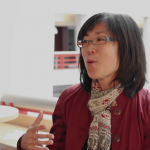Code of Secrecy
Knowing who to protect, and when, is a sticky business. Three deciders tell us how they deal with confidential sources
As reporters Andrew McIntosh and Daniel Leblanc await Supreme Court of Canada rulings that will determine whether they can continue to protect the identities of their confidential sources, the decision to grant someone anonymity remains a difficult one for Canadian news organizations. We asked three senior editors how they deal with the issue.
RRJ:What’s the procedure when requesting anonymity for a source?
Esther Enkin, executive editor, CBC News: There’s a discussion, and all decisions are made against our policy book.
Ellie Kirzner, senior news editor, NOW Magazine: The editor always has to know who the source is so she can be part of evaluating whether this is a worthy source to bother quoting—a source of substance or, as we would say, an “authorized knower” or an “unauthorized knower,” someone in a position to actually know. Just because a source is anonymous doesn’t mean you don’t have to go to great lengths to assess whether it’s worthy information.
Jeremy Keehn, senior editor, The Walrus: If we’re reporting a narrative—particularly one that’s investigative—we’ll have a discussion right away if we think a source is going to require anonymity, and if so, what sorts of arrangements we’ll need to make and why. We have to decide what the interest is in protecting his identity and if it’s a situation where there’s a clear public interest in people knowing who the source is. People will sometimes request a cloak of anonymity for reasons that are more related to their desire for privacy than their need to conceal their identity.
I can’t think of any instances where I’ve received a draft and the writer has changed a name without us having discussed it beforehand. In the November issue, for example, Alex Hutchinson had a piece where he was working with someone’s medical history—a case study where, because of the rules in the medical community, we couldn’t reveal the person’s name. We had a discussion around the time the draft came in, and since even Alex didn’t know the identity of the person, we had to discuss at what point to mention the changed name to the reader and how to be clear about it.
RRJ: How often do writers make these requests?
Enkin: There are two levels. There’s an anonymous program participant, which is like a clip in a story or an interview on a morning show, as opposed to a source in an ongoing investigation. It’s the same ethical dilemma, but one obviously has a little more impact than the other. So, “Can we interview a recovering alcoholic and not use his name?” Those are almost daily. The more serious, working with an anonymous source, I don’t know if I could quantify that…I would say it’s not as common.
Kirzner: It happens a fair amount, but we always need to know the reason for the anonymity. To inject yourself into a story without using your name, you’re affecting people’s lives, so we need a good reason why a source won’t reveal his name. There are many reasons why this might happen. We’re always weighing it.
But it’s complicated. Unlike The New York Times, which can use “unnamed sources” in major political stories because the reader is to assume the writer has close connections inside Washington, we can’t lean on our readers in that way. The story has to be set up in a way to assure our readers that the information is credible. Unless we have the one smoking gun, the “Deep Throat”—it can happen, but using an unnamed source as the key point of a story doesn’t happen much.
Keehn: Very rarely. Of the 30 we’ve published in the last couple months and including the ones we’ve got planned, I think we have three where it’s been an issue.
RRJ: How often do you reject requests for source anonymity?
Enkin: Usually, a serious investigative piece is so thorough and has so many checks and counterchecks that…it’s not often. Once we’re that serious, we’re going to keep at it. Do we drop stories from time to time because we can’t get other proof? Yeah. But it’s not that frequent.
Kirzner: Sometimes. It’s not often, but a story can perish if it’s not credible enough to the reader. Also, unnamed sources often require other levels of substantiation. Every reporter, once in his life, will get a hot story from a “Deep Throat” that rises or falls on the one source, but it’s not common, and usually you need corroboration, someone in the vicinity of the game who has a similar take. It’s an assessment game, but it’s a deep process.
Keehn: It’s rare, and usually it’s clear why we need to do it. In the maybe one or two cases where I’ve had some qualms about it, I wouldn’t have said there was a clear public interest in knowing who the source was or that anything was lost in terms of the credibility of the story by not saying who it was.
RRJ: Is the policy you follow a physical document?
Enkin: We follow CBC’s Journalistic Standards and Practices.
Kirzner: It evolves in discussion, but I assume other news media have similar—if not identical—guidelines.
Keehn: We don’t have a formal in-house code of ethics. The two I personally tend to consult—almost interchangeably, because they cover the same principles—are the Canadian Association of Journalists one and the CBC Journalistic Standards and Practices. If it’s more of a legal concern—if we ever ran into a situation where someone could legitimately get fired, because Canada has crappy whistleblower protection—I have a legal guide we’d use for those sorts of things. Or we’d get a lawyer.
Jordan Ginsberg was the Online Editor for the Spring 2010 issue of the Ryerson Review of Journalism.













































